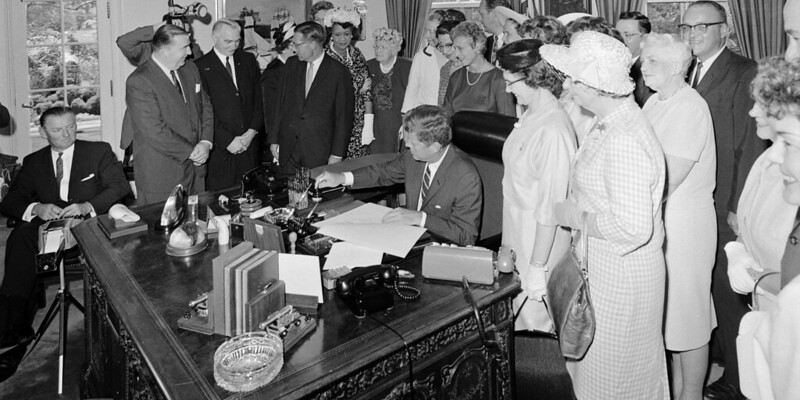
The Equal Pay Act was passed on June 10, 1963, but 58 years later women continue to earn less than men.
Two recently released analyses from the Women’s Bureau show that, on average, women earn 80% to 83% of what men do, and most of this gender wage gap cannot be explained by differences in men’s and women’s work histories, work hours, industry and occupation distribution, or job characteristics.
On average, women working full-time, year-round earned $47,299 in 2019 while men working full-time, year-round earned $57,456. For women of color the wage gap is even greater: Black women earn 63% of what white non-Hispanic men are paid and Latinas are paid 55% as much.
Occupational segregation, the devaluation of work traditionally done by women, and caregiving penalties that fall disproportionately on women all contribute to the wage gap. Our recent research confirms that occupations employing a larger share of women paid lower wages on average than similar male-dominant occupations, and these wage differences could not be explained away by the characteristics of the workers or the requirements of the jobs.
At the same time that women are sorted into lower-wage work, many also experience wage penalties related to their caregiving responsibilities. Only 20% of U.S. workers have access to paid family leave through work, and in part-time jobs and the service sector – where many working women are concentrated – it is often difficult to take leave without work-related repercussions. This means workers who care for children or elderly parents may have to choose between taking care of their loved ones when they are ill or losing a day’s worth of pay, if not their job.
As the country emerges from the pandemic, we don’t want to simply return to “normal” – we want to build back better and provide an equitable recovery for all workers. Let’s realize the aspirations of the Equal Pay Act by supporting the logical next steps that will move us toward true pay equity.
It’s on us to end to the insidious vestiges of gender-based pay discrimination, create pathways to good-paying jobs for women, value the jobs traditionally held by women, and provide a work-life balance that encourages women’s participation in our economy by expanding access to paid leave.
At the Women’s Bureau, we are expanding pathways to higher-paying jobs via the Women in Apprenticeship and Nontraditional Occupations (WANTO) grant program, which seeks to increase the number of women in registered apprenticeships and historically male-dominated jobs. We’re also developing a database to track child care costs and how they relate to women’s labor force behavior, and are working to document the long-term financial costs of caring, which fall disproportionately on women.
Policies to promote equal pay are essential to helping everyone succeed, both men and women alike. As Women’s Bureau Director Wendy Chun-Hoon says, “If the economy doesn’t work for women, it doesn’t work.”
Charmaine Davis is the regional administrator for the U.S. Department of Labor’s Women’s Bureau in the Southeast, Midwest and South Central states. Follow the bureau on Twitter at @WB_DOL.

 U.S. Department of Labor Blog
U.S. Department of Labor Blog